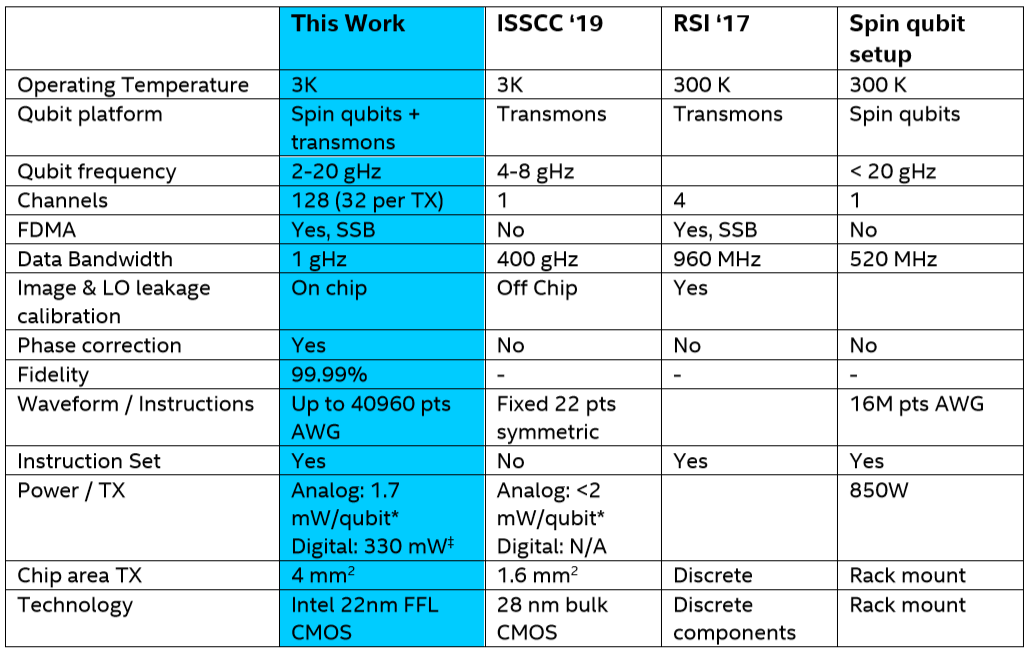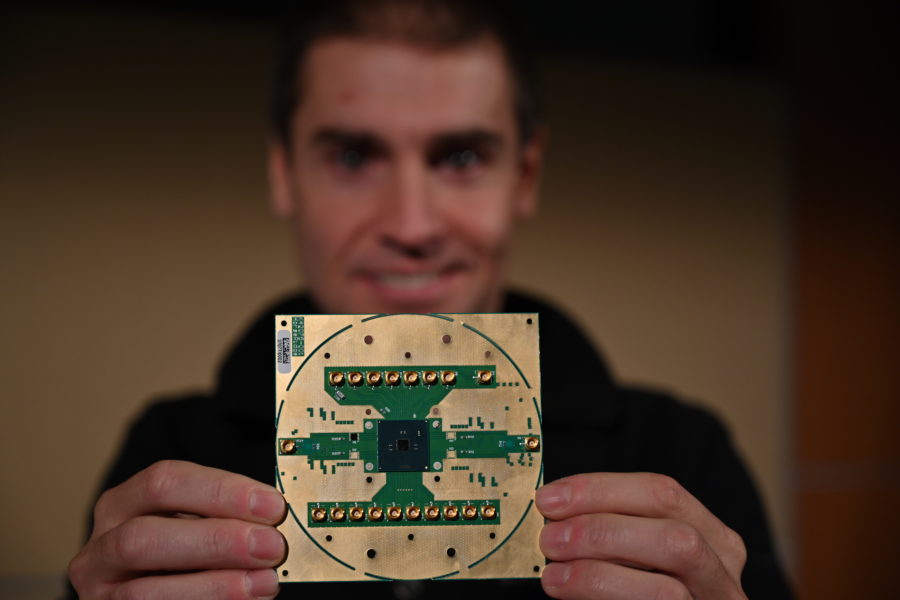Intel Details Its Cryogenic Horse Ridge Quantum Control Chip
Intel details Horse Ridge, a cryogenic chip that can control up to 128 qubits.
Intel Labs and QuTech, TU Delft have unveiled technical details of their cryogenic control chip for quantum computers at ISSCC, called Horse Ridge. The goal of the chip is to help scale quantum computer to thousands of chips by reducing the interconnect complexity, and eventually to demonstrate quantum practicality: solving real-world problems with quantum computers. Built on Intel’s 22FFL process, it uses RF capabilities to control 128 qubits with a single device.
The high-level goal of Horse Ridge is to simplify today’s complex control electronics required for a quantum system, reducing it to an integrated SoC that operates at almost the same cryogenic temperatures as the quantum chip itself. The development of Horse Ridge focused on three main areas: scalability, fidelity and fliexibility.
The chip was detailed in a research paper by Intel Labs and QuTech released at the 2020 International Solid-State Circuits Conference (ISSCC) in San Francisco, titled ‘A Scalable Cryo-CMOS 2-to-20GHz Digitally Intensive Controller for 4×32 Frequency Multiplexed Spin Qubits/Transmons in 22nm FinFET Technology for Quantum Computers’. It is a mixed-signal, cryogenic chip with a 4x4 mm2 die size, integrating SRAM, digital core and analog/RF circuitry.
The paper confirms that the chip is built on Intel’s 22FFL CMOS process technology and says it integrates four RF channels on a single device. Each channel can control 32 qubits by using frequency multiplexing, which means that the bandwidth (frequency spectrum) is divided into 32 non-overlapping bands that can each carry a separate signal. By using four channels, up to 128 qubits can be controlled with a single device (transistor). This substantially reduces the number of cables required and improves scalability.

However, scaling the qubit count comes with challenges in terms of their fidelity and performance. Intel says it optimized the multiplexing technology and reduced errors from phase shift, which means that crosstalk between qubit occurs due to the controlling of the qubits at different frequencies. To that end, each frequency can be “tuned” to high precision, automatically correcting for phase shift.
Thirdly, Horse Ridge’s flexibility lies in its ability to cover a wide frequency range. This allows the chip to control both types of qubits that Intel is researching: superconducting qubits (transmons) and spin qubits. The former typically operate at 6 to 7GHz, while spin qubits operate at 13 to 20GHz, according to Intel. Spin qubits can operate at up to 1 Kelvin, paving the way for the devices to operate together with the control electronics in one package.
“Today, quantum researchers work with just a small number of qubits, using smaller, custom-designed systems surrounded by complex control and interconnect mechanisms,” said Jim Clarke, Intel’s director of quantum hardware. “Intel’s Horse Ridge greatly minimizes this complexity. By systematically working to scale to thousands of qubits required for quantum practicality, we’re continuing to make steady progress toward making commercially viable quantum computing a reality in our future.”
Get Tom's Hardware's best news and in-depth reviews, straight to your inbox.
Intel first unveiled Horse Ridge in December. It marks an important advancement towards Intel’s goal of achieving quantum practicality: solving real-world applications with quantum systems.
